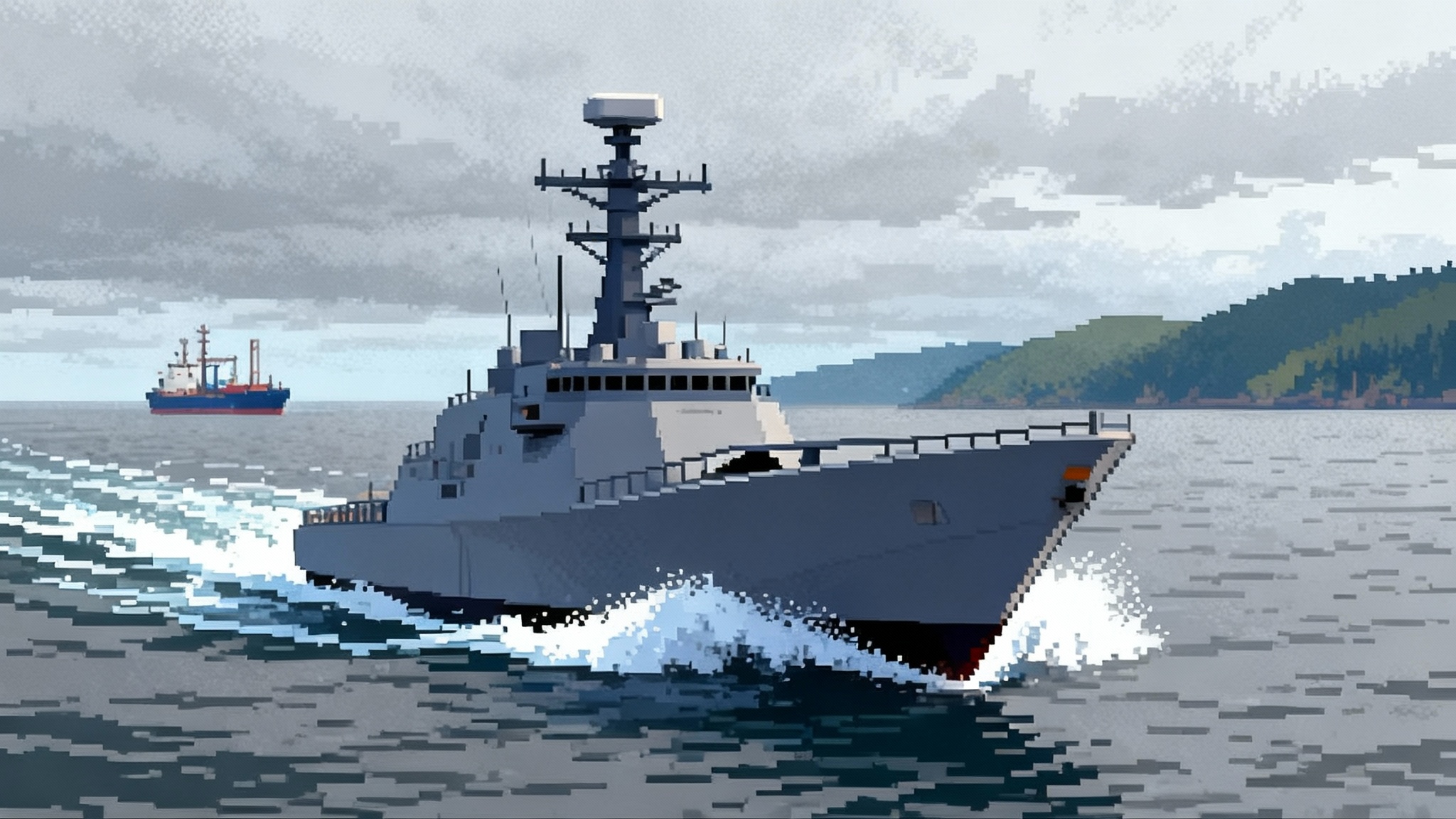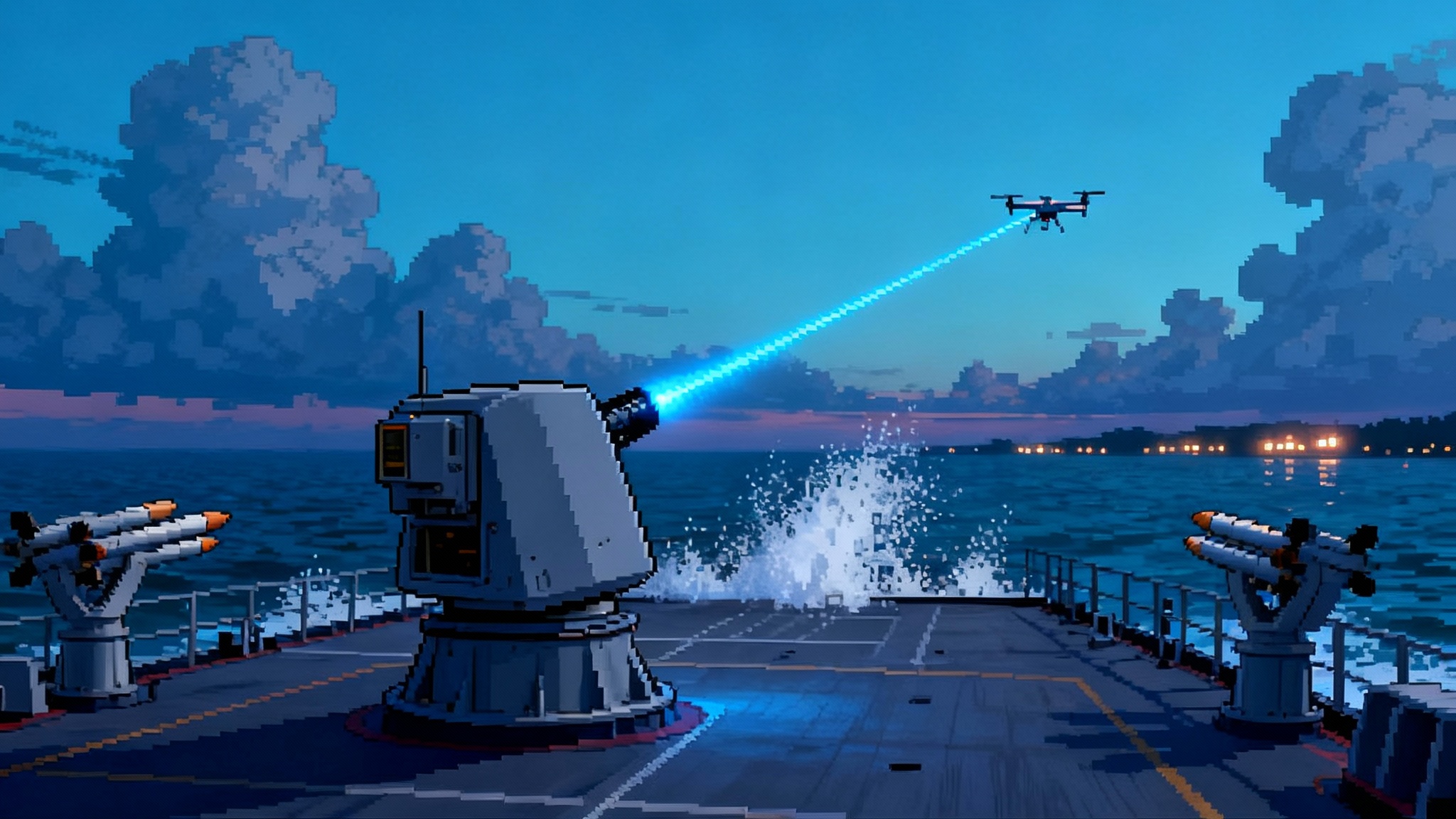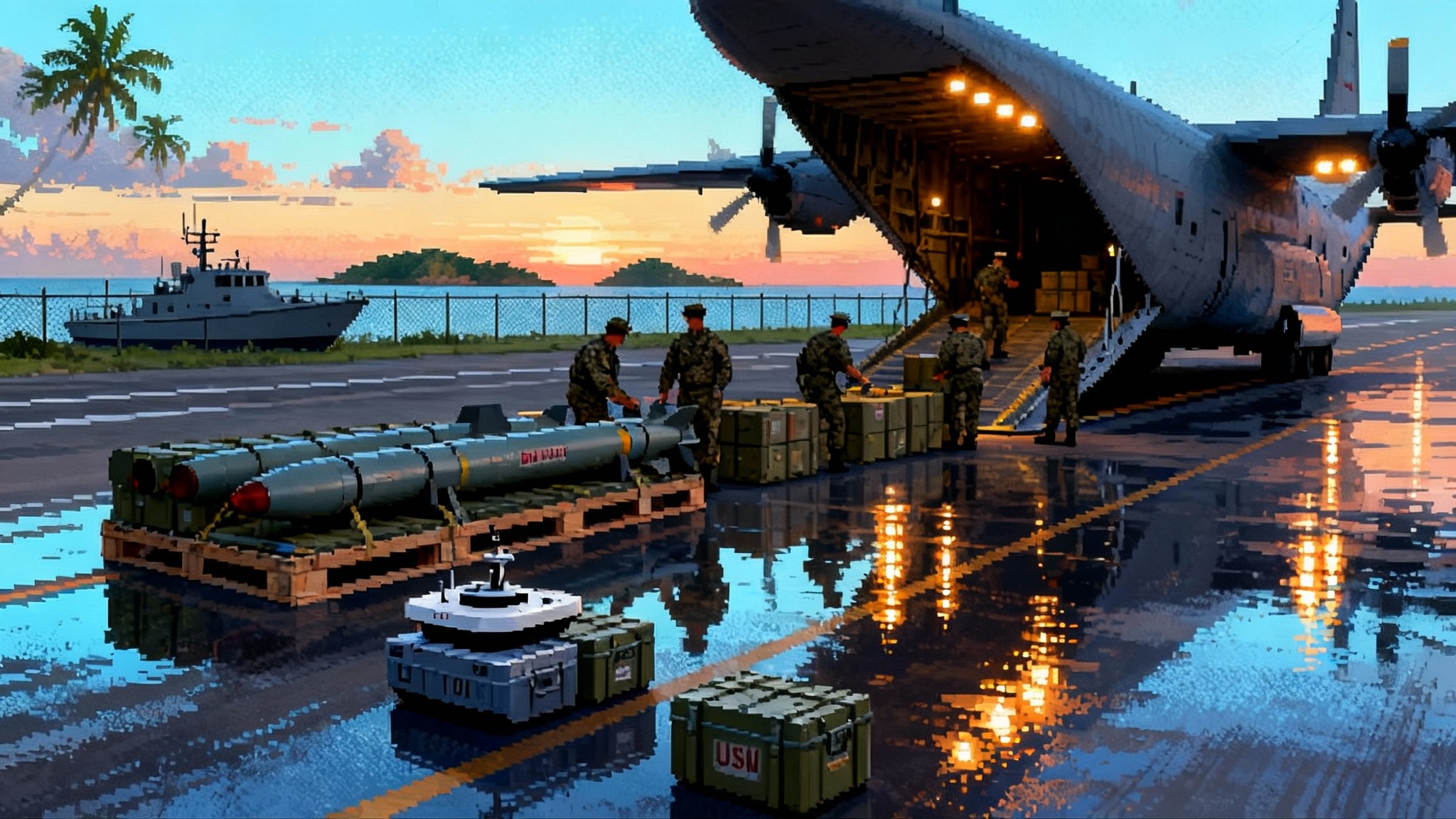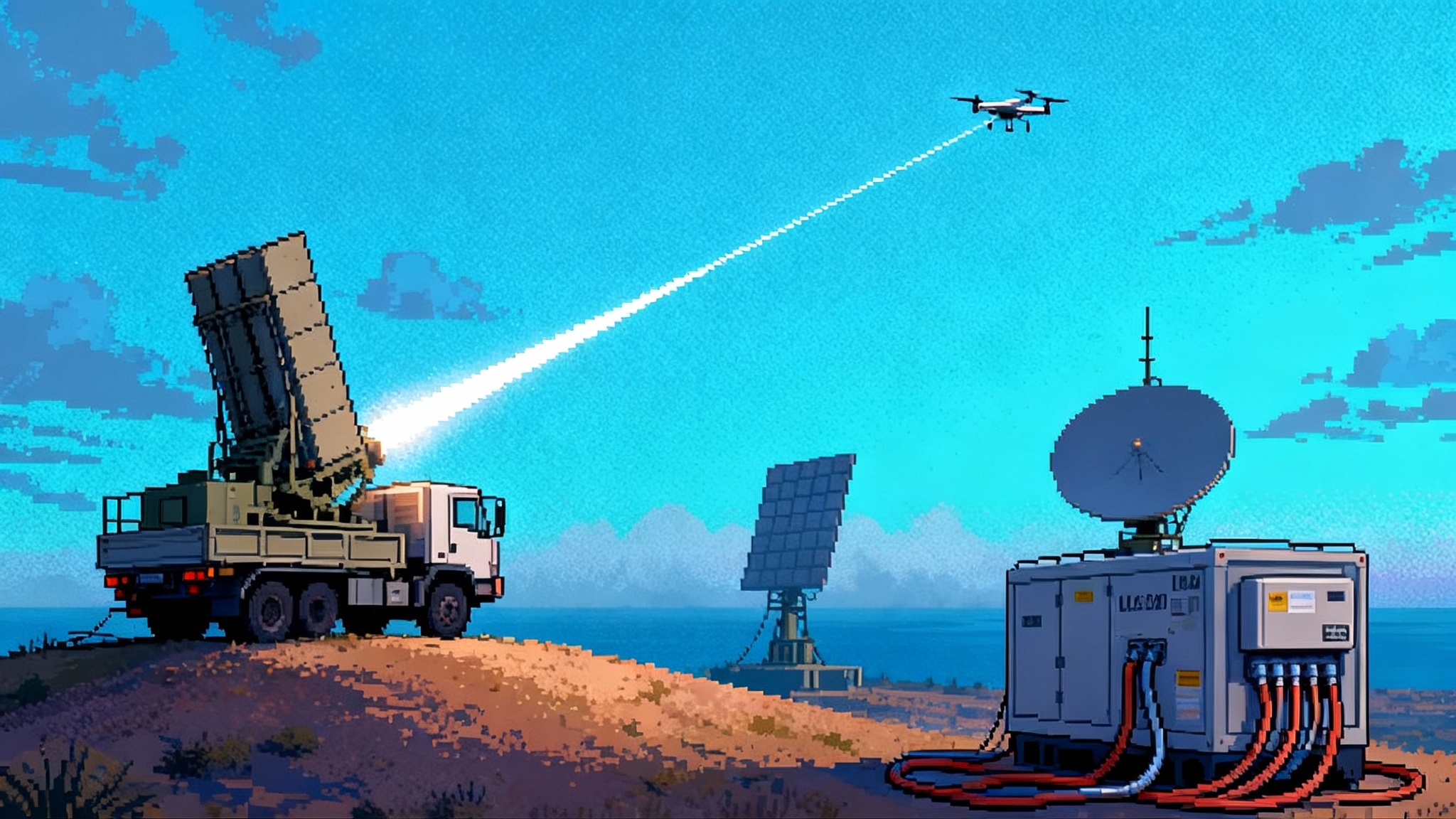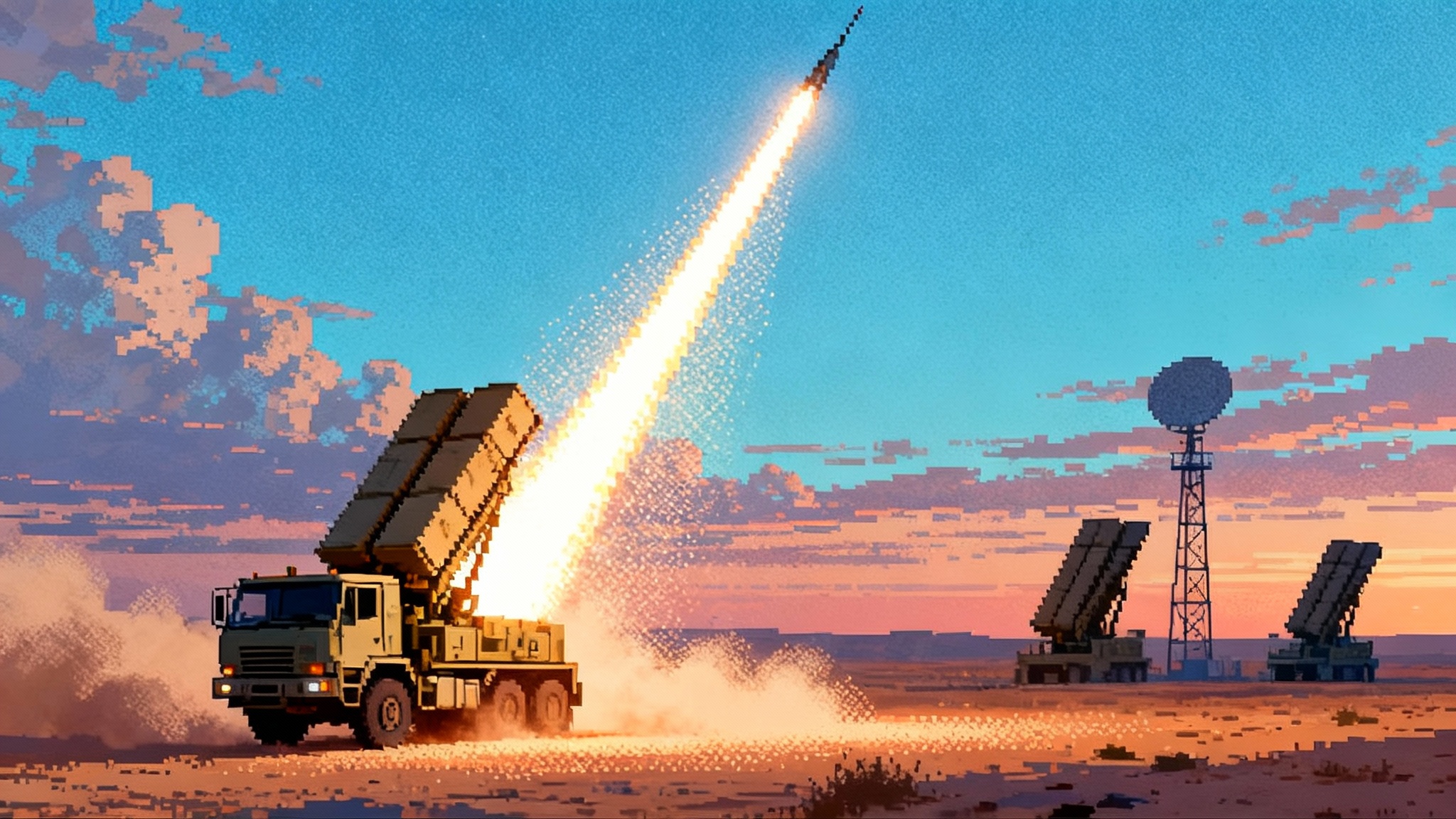Ammo Factories Go to War: The 155mm Surge’s New Chokepoints
Spring to summer 2025 delivered new U.S. LAP lines and a greenlit Iowa complex, plus fresh European spend. Yet chemistry and small energetics now cap the rate. We map the real chokepoints, why six figures a month slips to mid 2026, and what sustained mass fires mean for doctrine and the Pacific.
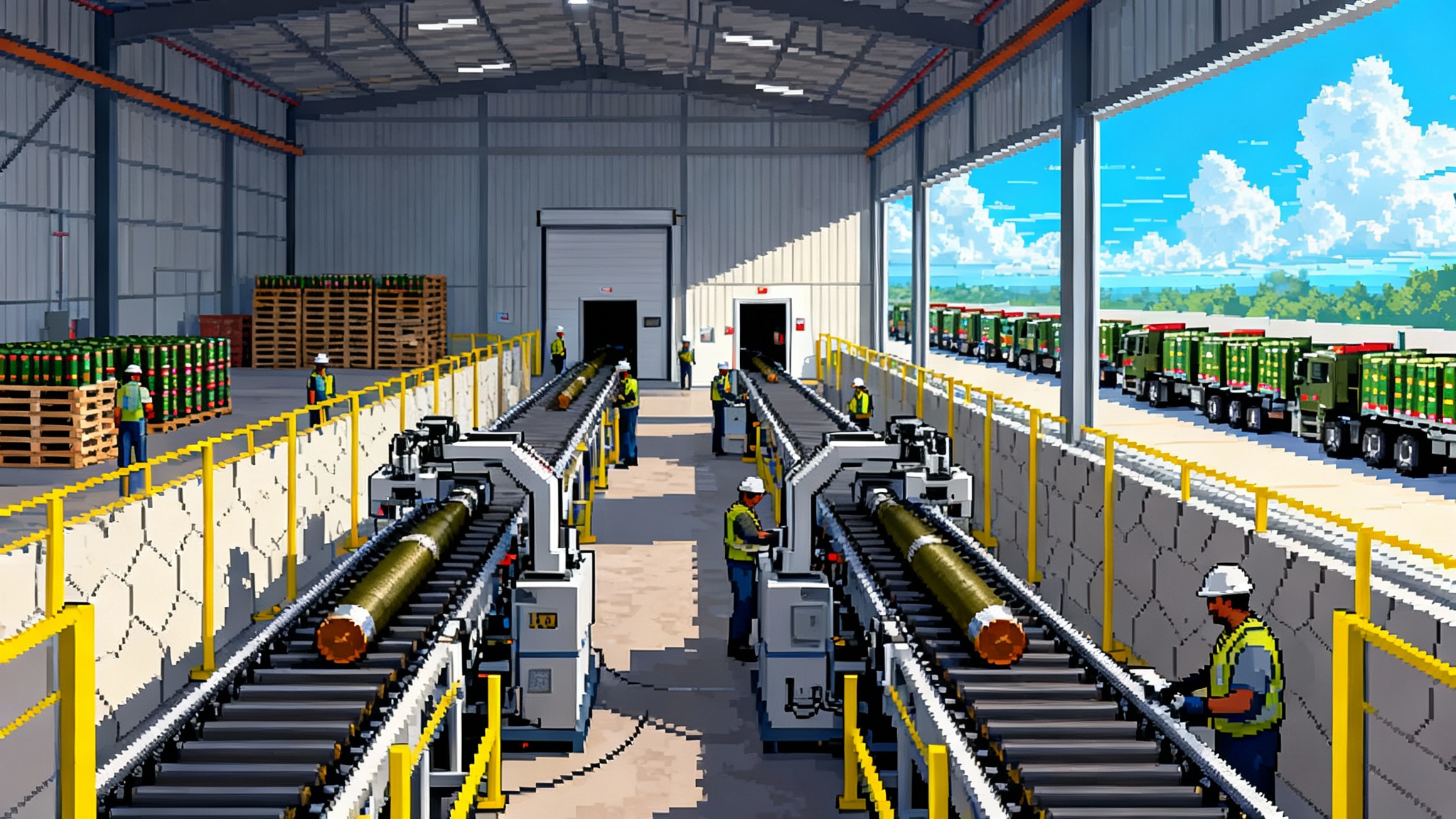
Quick takeaways
- New U.S. and European lines are real, but TNT, nitrocellulose, charges, fuzes and primers are the pacing items.
- Two big U.S. markers in 2025: Camden’s modern LAP lines and the Iowa Future Artillery Complex.
- Expect a consistent six figure monthly run rate to land in mid 2026, not late 2025.
- Automation, digital QA and multi site LAP raise resilience, but commissioning and safety stretch schedules.
- Doctrine is shifting toward mass plus precision, with logistics and counterbattery driving the kill chain.
The 155mm ramp that finally arrived
The story of 155mm artillery in 2025 is not a single ribbon cutting. It is a stack of them, all chasing the same bottlenecks. In April, the Army and General Dynamics opened a modern load, assemble and pack facility in Camden, Arkansas, with two automated lines designed to turn out roughly 50,000 complete high explosive projectiles per month once fully dialed in. That plant is the clearest signal that the United States has moved from surge talk to surge hardware, with automation, digital quality control and safer energetics handling now baked into the floor plan. The Army’s description of the site is blunt about the intent, which is to push total monthly 155mm output to six figures as quickly as the supply chain will tolerate, and to do it with higher consistency than the legacy base could support. The Army’s Camden LAP opening was the spring inflection point.
By late summer, the Army added momentum on the upstream side by awarding a contract to design and build the Future Artillery Complex at the Iowa Army Ammunition Plant. The new complex formalizes where the next tranche of capacity will live and, just as important, where future upgrades and redundancy will concentrate. The service framed it as another leg in a multi year modernization of the organic industrial base that supplies not just U.S. forces but allies as well. The goal is to make the supply chain harder to break and quicker to restart. The Iowa move is not a headline for tomorrow morning’s deliveries, but it is the anchor for 2026 to 2028 capacity. See the Army’s announcement of the Iowa Future Artillery Complex for the official contours.
In parallel, Europe kept spending and signing. Rheinmetall pushed deeper into vertical integration for propellants and shells, and national capitals funded more charge and explosive capacity. The Czech led global buying initiative, which gathered funds from multiple donors and sourced shells worldwide, turned into a real pipeline rather than a press release. For a year that started with shortages, spring and summer delivered new machines, new buildings and a lot more throughput.
The real bottlenecks in 2025
Everyone can picture a steel shell body. Fewer picture the chemistry and small parts that make it a working round. That is where the chokepoints live.
-
TNT and other fills. This is the most tangible constraint. For decades the U.S. relied on foreign TNT. Restarting domestic TNT at industrial scale requires purpose built plants, exacting environmental controls and specialty workforce skills. Contracts are now in place to revive TNT production stateside, but commissioning an energetics plant safely takes time. Europe faces a similar squeeze. At the start of 2025, Poland’s Nitro Chem was carrying much of the NATO grade TNT load, and new entrants are still building sites and processes. Until more of that capacity is qualified and stable, shell body flow will outpace explosive fills.
-
Nitrocellulose for propellants. Nitrocellulose is the base for gun propellant. There are a handful of qualified producers globally, and for years a surprising share of military grade feedstock and cotton linters came from outside NATO. European producers have restarted and expanded lines, and big primes have moved to buy or partner with nitrocellulose makers to secure supply. But this is chemistry, not kit assembly. Scaling safely means new acid plants, solvent recovery, waste treatment and a lot of permitting. It has improved in 2025, just not enough to erase the constraint.
-
Modular charges. The projectile is only half of a 155mm round. The other half is the modular artillery charge system, in several increments, plus the combustible cases that hold them. Charges are laborious to make, require stable nitrocellulose and nitroglycerin supply, and the LAP steps for charge increments are distinct from projectile LAP. In 2024 the U.S. could make far more bodies than complete rounds because charge lines lagged. The new U.S. lines and European investments are closing that gap, but charge output is still the pacing item in many plants.
-
Fuzes and primers. You cannot shoot without a primer and you are wasting a shot without a reliable fuze. Multi option fuzes and proximity fuzes have their own electronics, safety and energetic components and require suppliers who can meet military spec at volume. Several orders to raise fuze output are in flight, and some vendors have added automation in testing and assembly. Primers remain a niche industrial craft with few qualified sources. There is progress, but not yet a glut.
The punchline is simple. A 155mm round is a system of systems. You need steel, energetic fill, propellant, combustibles, primer, fuze and then the last mile of assembly. In 2025 the constraint has migrated from steel to chemistry and small energetics.
How automation and multi site LAP change resilience
The new wave of LAP lines is not the 1950s in a fresh coat of paint. Three shifts matter for resilience.
-
Automation reduces human in the loop risk where it counts. Robotic handling of wet energetics, automated fill and cure, and machine vision for defects remove variability in the dangerous steps. That yields tighter tolerances, fewer rejects and less rework. In an artillery context, that translates to more consistent muzzle velocities and patterns, which reduces waste in the field.
-
Digital quality records travel with each shell. The newest plants track every lot of explosive, each cure cycle and temperature profile, and the torque on threaded assemblies. If there is a problem, you trace it quickly to the exact batch and process step. That makes containment fast and prevents line wide pauses when you do not need them.
-
Multi site layout breaks single points of failure. Historically, key LAP functions were captive to one or two legacy government sites. The 2025 footprint distributes LAP across government owned and contractor operated sites in multiple states. In practice that means a storm, a labor stoppage, or a safety stand down at one site is less likely to halt the entire 155mm flow. It also supports cross training and surge sharing when a unit needs to sprint.
There is a quality curve to climb with any new line. Early automation often yields lower output as teams tune recipes and maintenance schedules. But once the curve flattens, the lines hold rate and quality with fewer surprises, which is exactly what a long war supply chain needs.
Why 100,000 per month is sliding into 2026
If you walked the shop floors this summer, the slippage would not surprise you. Several stubborn realities stack up.
-
Commissioning time is real. A LAP line or a propellant line is not a pick and place cell. Certifying energetics equipment, running first articles, and qualifying lots with the Army’s testers takes months. Safety is unforgiving. If a test lot fails, you tweak, rerun and wait for data.
-
Equipment lead times are longer than the PowerPoint assumed. Flow forming machines, automated guided vehicles, spark proof robotics, acid plant skids, solvent recovery units and blast proof HVAC are not on a shelf. Some of the most specialized gear is built in Europe or Canada. Export paperwork and maritime shipping add weeks to months.
-
Chemistry beats steel on schedule risk. You can stand up a shell body line faster than you can stand up TNT or nitrocellulose output that meets spec. The United States and allies have pushed hard on explosives, but until the new TNT and nitrocellulose plants are through their own ramps, complete rounds will trail projectile counts.
-
Quality first culture slows the sprint but avoids rework. Program managers and plant leads are explicit about not pushing nonconforming rounds. That forces a slower ramp when a new automation step or new alloy does not immediately produce parts inside tolerance. It hurts the headline rate now and helps the field later.
-
Workforce and training matter. You can hire quickly, but training operators for energetics, QA and maintenance on new lines takes quarters, not weeks. The talent market is tighter near some plants than others. Retention bonuses and apprenticeship pipelines are helping, but this is a race against time.
Put that together and mid 2026 looks like the honest arrival point for a consistent six figure monthly rate of complete, conforming rounds. The April to August surge was real, but the chemistry and component tails are still catching up.
Europe’s parallel fix, and the Czech buying bridge
Europe spent 2025 fixing the same problems, just with a different mix. Several themes stand out.
-
Vertical integration is back. Prime contractors bought nitrocellulose makers and partnered on gunpowder to secure propellant feedstocks. The thesis is simple. If you control the chemical backbone, you can keep shells flowing when the world gets weird.
-
Nitrocellulose restarts and TNT greenfield projects are in vogue. French and Nordic sites restarted lines and added capacity. New TNT plants in northern Europe aim to reduce reliance on a single supplier. Every one of those projects comes with environmental and safety engineering that tests local regulators and plant managers. The payoff will arrive in 2026 and 2027 when those lines clear qualification.
-
The Czech led global purchase program created time. By sourcing shells from outside Europe, then finishing or certifying them inside Europe, Prague and partners turned money into near term volume while factories caught up. It was never a substitute for industrial base repair, but it kept Ukrainian guns supplied as the domestic lines matured.
The European picture looks less centralized than the U.S. approach. That diversity has its own resilience. It is also harder to track, which makes coordination and stockpile management the next challenge for Brussels, Berlin and Paris.
What sustained mass fires mean for doctrine and stockpiles
Artillery is not just a logistics problem. It shapes how armies fight.
-
Consumption rates redefine training and prepositioning. A brigade that expects to shoot tens of thousands of rounds in a month needs ammunition parks, not piles. That means larger, better protected forward ammo sites with real intratheater movement plans, more heavy trucks and more crews trained on safe handling.
-
Counterbattery gets even more decisive. If both sides can mass fires, the side that kills guns and radars faster wins the exchange. That emphasizes radar survivability, decoys, shoot and scoot discipline, and automated fire mission workflows that compress sensor to shooter time, reinforced by the SDA Tranche 1 LEO mesh.
-
Precision mixes with volume. Cheap guided kits for 155mm and reliable proximity fuzes change the ratio of rounds per effect. Doctrines are adjusting to use precision to crack hard points and volume to suppress. The plants matter because both approaches still consume propellant and fuzes at scale.
-
Stockpiles grow and diversify. The takeaway from the last two years is that peacetime stockpiles were too small and too narrow. Services are now writing tables of allowance that include more smoke, illumination and specialty rounds, plus deeper reserves of charges and fuzes that match the projectile mix.
-
Training realism increases wear and cost. To keep gun crews sharp, armies will shoot more live ammunition in peacetime. That drives barrel wear, spares and even more training ammunition. Budgets that bought steel in 2023 now have to buy barrels, breech parts and extra charge increments in 2026.
The Indo Pacific pacing problem
A 155mm round flies the same no matter where you fire it. Everything else changes in the Pacific.
-
Distance turns volume into a shipping plan. Moving hundreds of containers of ammunition across the Pacific is a sealift task, not a day trip by truck. Palletization, reefers for temperature control on some energetics, and munition compatible prepositioned ships matter. The more factories can load and seal ready to shoot packages, the easier the port to foxhole chain becomes.
-
Heat and humidity punish propellants and combustibles. Charge increments have storage life curves that need shade, airflow and careful handling. Pacific basing will need better magazines, more frequent lot rotation, and training for crews to manage temperature sensitive stocks.
-
Distributed maritime operations need distributed land fires. Islands and littorals demand modular batteries that can hop, hide and shoot. That means more but smaller ammunition nodes and a premium on resupply automation, from palletized load systems to autonomous forklifts that reduce unload time at exposed beaches, a concept aligned with Typhon coastal batteries in Japan.
-
Allies are the magazine. Japan, Australia, South Korea and the Philippines are investing in artillery and rocket stockpiles, plus local production. Interoperability for fuzes and charges, not just projectiles, will decide how flexible those combined stocks are when a commander needs to mix and match, especially as Dark Eagle reshapes Indo Pacific deterrence.
In short, the Pacific asks the 155mm enterprise to be not just bigger but more expeditionary. The factories that can package smarter and push data about lots and storage recommendations forward will make that easier.
What to watch over the next 12 months
- Charge output vs projectile output. If charge lines finally match projectile lines, the headline rates will reflect complete rounds, not just bodies. That is the inflection to watch.
- TNT and nitrocellulose commissioning milestones. Expect cautious but steady progress. Each successful lot acceptance test at a new plant unlocks more confidence in 2026 plans.
- Fuze and primer throughput. Two or three suppliers hitting schedule and yield targets will turn a brittle chain into a resilient one.
- Iowa site progress. Groundbreaking and early construction pace at the Future Artillery Complex will tell you how quickly the next wave of capacity arrives.
- European greenfield sites. If Baltic and Central European shell and propellant projects hit their timetables, NATO’s aggregate monthly output will finally resemble its public targets.
- Doctrine and logistics experiments. Watch for new prepositioning concepts, containerized ammo parks, and live fire training that burns through enough rounds to stress the replenishment loop. Those exercises will reveal whether 2026 production can keep up with the field’s appetite.
The spring to summer ramp proved the industrial base can move faster than it did in the last generation. The reality of energetics chemistry, specialist equipment and a safety first culture means the finish line slides to mid 2026. That is not failure. It is what surge looks like when you rebuild the backbone while the guns are still firing.


